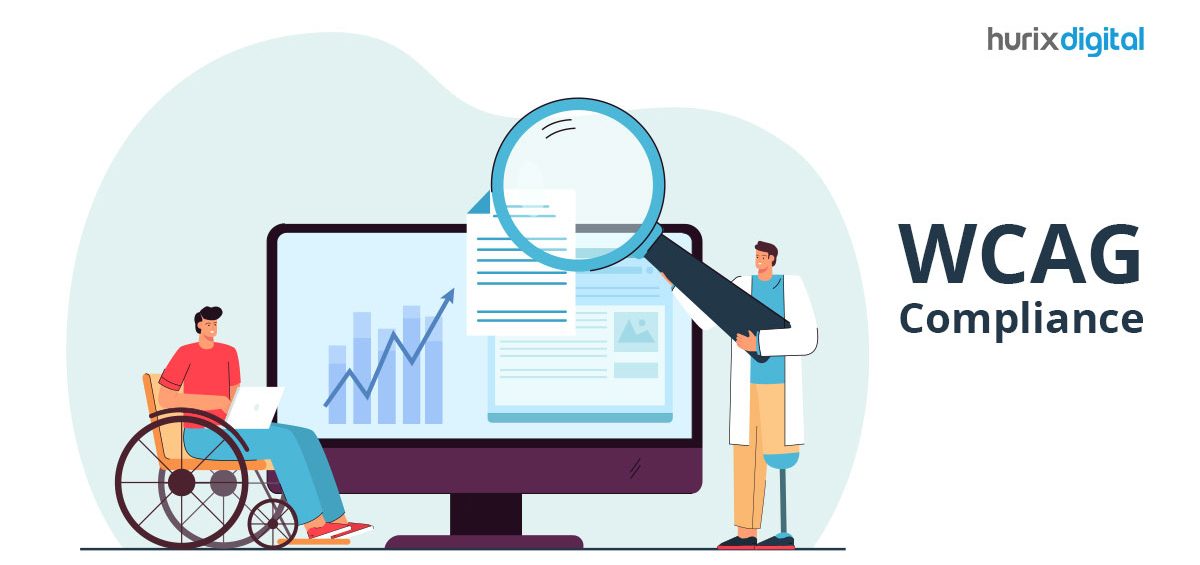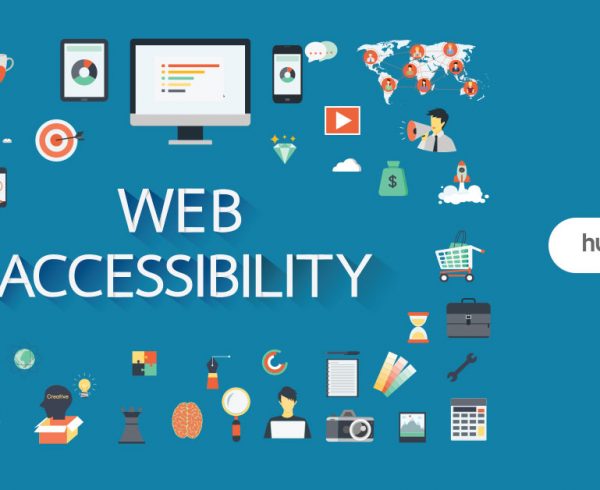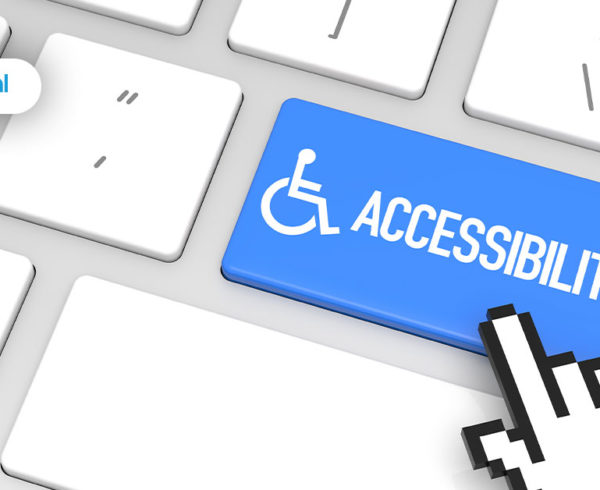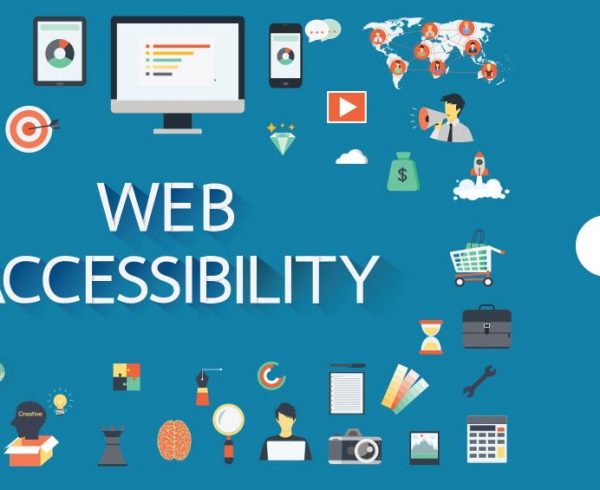WCAG compliance has become the need of the hour for businesses to stand out among their competitors. Businesses invest significant expense and effort while designing their website as it represents their business to the digital world.
The layout, design, responsiveness, flexibility, visual elements, and multi-device compatibility are all considered while designing a website. Business owners don’t want their websites to be mediocre, so they invest a lot to build top-quality sites.
Despite their efforts, most businesses fail to check one crucial box, web accessibility. Your website looks fresh and user-friendly for most audiences, but what about people with disabilities?
Yes, your audience might comprise a significant number of people with disabilities. Have you made your website accessible to them?
If you haven’t considered web accessibility, this article is just what you need. Learn more about web accessibility and why WCAG compliance is necessary for your website.
Table of Contents:
- What is Web Accessibility?
- Who Dictates Web Accessibility Guidelines?
- WCAG Compliance Guidelines
- WCAG Compliance Levels
- How to Achieve WCAG Compliance?
- Conclusion
What is Web Accessibility?
The strategy of making websites accessible for all site visitors, including individuals with disabilities, sensory impairments, and limitations, is known as web accessibility.
It is estimated that over 1 billion people around the world experience some form of disability. Regular day-to-day activities are harder for them than for most people.
Businesses need to follow certain design principles to ensure that people with disabilities get the same site experience, just like every other visitor. Your website must provide a similar experience to all users, which is why adhering to web accessibility guidelines is important.
Who Dictates Web Accessibility Guidelines?
There are no constitutional laws that make web accessibility compliance mandatory. However, you can be sued or face a lawsuit if your website is not accessible.
The Web Accessibility Initiative (WIP) of the World Wide Web Consortium (W3C) is the governing body that publishes the Web Content Accessibility Guidelines (WCAG).
It is important to ensure that anyone may consume, navigate, or access whatever information you share. The simplest method to accomplish this is to follow WCAG, so let’s go over their standards and guidelines.
WCAG Compliance Guidelines
As per WCAG 2.1, there are four principles to adhere to when creating your website:
Perceivable
Audiences visiting your website should be able to perceive all the available content on the site. This principle is directly tied to the senses, specifically vision, hearing, and tactile interactions. If a visitor lacks one of these senses, your website should still be accessible to them.
If a user is blind and unable to see your content, they will use screen reader software to convert text into synthesized speech or braille characters. Your website must be compatible with such software to facilitate accessibility.
Operable
Every user will interact with your website in a variety of ways. Your website must be operable to all of them irrespective of the action they take.
Navigating your website, clicking a button, adding a product to the cart, signing up for your newsletter, etc., should be easily operable for all visitors. They might use only a keyboard or a joystick instead of a mouse, and your website options must be accessible to those devices.
On most sites, voice recognition is used only in the search box. However, allowing access to all your website information through voice search is an option worth considering. Now is the time to optimize your website so you can build on the voice technology options you offer.
Understandable
Visitors should be able to comprehend all of the information on the website. Screen reader software must accurately interpret all content with zero backend issues that render the reader incomprehensible.
This principle relates to all content and its readability. Websites should use simple language and avoid lengthy explanations or difficult technical jargon that most visitors would not comprehend.
Enhancing readability is not just helpful for screen readers and people with disabilities; it must be a general practice to deliver a better experience for all your customers.
Make your content easy for machines like screen readers, Google crawlers, etc., to read without issues.
Robust
Your website must be flexible and compatible with any type of technology or devices your visitors might use.
As stated previously, some users might use a joystick instead of a mouse; blind people might use screen readers to comprehend your content. Your website must work with multiple devices and operating systems without hiccups.
Robustness is the crux of web accessibility, so make sure your website is compatible with assistive technologies and devices to be compliant.
WCAG Compliance Levels
WCAG compliance has three different levels to categorize the level of compliance:
A Level
This is the minimum level of compliance for online content. It’s a good place to start, but it shouldn’t be the end objective for any company with a website. A level can save you from a lawsuit, but upgrading to a higher level as you grow is recommended.
AA Level
Private businesses with their own websites usually strive towards AA compliance. These guidelines are attainable for almost any website without being overly tough or complex.
Adopting AA level rules will guarantee that people with disabilities experience reasonable access.
AAA Level
This is the highest level of compliance and is reserved solely for government sites. Average/private businesses might find it hard to implement this level of compliance, and it might not be needed for them either.
WCAG compliance is a necessity. The governing body is constantly updating the guidelines. WCAG 2.1 is almost ready to be updated with WCAG 2.2, a new set of web accessibility guidelines.
How to Achieve WCAG Compliance?
You can easily achieve WCAG compliance by adhering to some of the common principles set by WCAG:
ALT Text
Web crawlers and screen readers cannot read Images. It is essential to add alt text describing the image so the machine can understand that it is an image and read it aloud for a person with a disability.
High Contrast
The background of your website and your web elements, like icons, text, CTA buttons, etc., should be in high contrast with each other. This will make it easier for crawlers and other accessibility readers to interpret it easily.
Clever Use of White Space
White space denotes every space you use on your website – letter spacing, icon spacing, line spacing, font spacing, etc. Using white space more effectively will make it easier for people with visual impairments to understand the content.
Glossaries, Summaries, and Table of Contents
A table of contents/glossary will make it easier for people with visual disabilities to navigate the site and locate what they are looking for. It can also benefit people with neurological diseases, learning disabilities, and other issues.
Color Friendly
Your website may be accessed by those who are colorblind. Certain colors shouldn’t be used together in menus or navigation because they may confuse people who are colorblind.
Captions
Sometimes, you might use a video to convey a message quickly. In that case, the landing page videos must have captions and subtitles so people with hearing loss can understand what the video is about.
You might use videos that provide a walkthrough of your product with no narration or audio. Ensure you narrate the videos while giving a product walkthrough, so people with visual impairments can perceive what’s happening.
Autofill
People with physical deformities can find it hard to enter their details every time they want to sign up or log in. Make sure that autofill is enabled for your website to make it easy for them.
If you own an eCommerce store, ensure that all your search box has an autofill option for all the products listed on your site.
Conclusion
It is tough for people with disabilities to perform daily tasks. So, your ultimate goal should be to make it easy for them in the digital world. Here’s where WCAG compliance comes into play.
WCAG compliance ensures that websites are easily accessible for all people, especially those with disabilities. Multiple tools on the internet can help make your website WCAG compliant.
Hurix Digital can make the web accessibility process easily scalable for your business website. So, if you want to ensure a hassle-free experience for all your users and stay ahead of lawsuits, Hurix Digital is just a click away.











